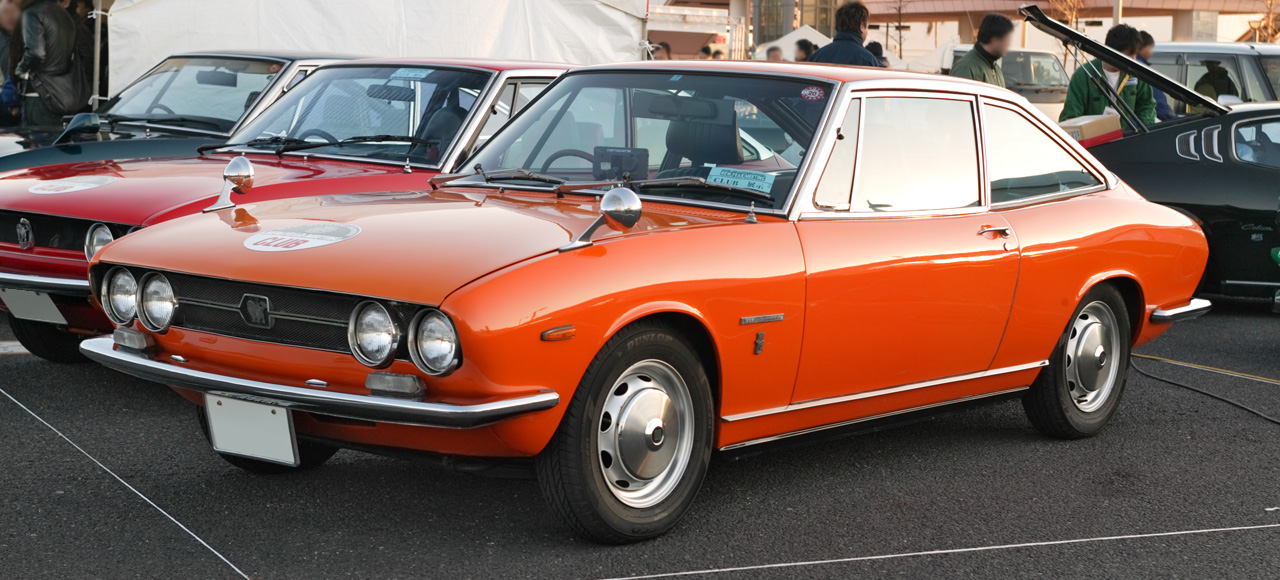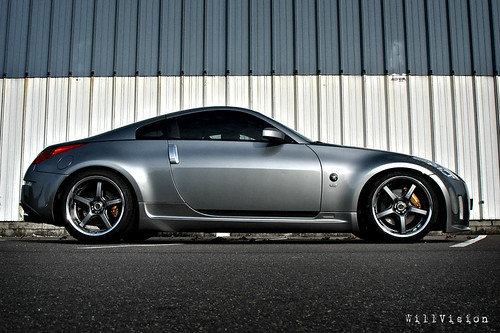Key Takeaways
| Aspect | Details |
|---|---|
| Notable Designers | Giovanni Michelotti, Minoru Hayashi, Giorgetto Giugiaro |
| Iconic Models | Toyota Corolla GT AE86, Toyota Land Cruiser J40, Mazda Cosmo, Honda Civic |
| Design Influence | Blending functionality with unique aesthetics |
| Industry Impact | Pioneering innovations in car design and manufacturing |
| Cultural Significance | Influence on global car culture, especially in sports and racing scenes |
The Artistic Legacy of Japanese Car Design: Celebrating Influential Designers and Iconic Models
The Japanese automotive industry is renowned for its significant contribution to global car culture, characterized by a unique blend of functionality, reliability, and aesthetic appeal. At the heart of this remarkable journey are influential designers whose visions transformed the vehicles they created and the broader automotive landscape. This exploration delves into the stories of these visionary designers and the iconic models they brought to life.
Giovanni Michelotti: The European Influence in Japanese Design
Italian designer Giovanni Michelotti’s influence on Japanese car design is epitomized by his work on the Prince Skyline Sport. Unveiled at the Torino Motor Show in 1960, this vehicle marked a pivotal moment in Japanese automotive history. Michelotti’s design embodied a blend of Italian flair and Japanese engineering, setting a new benchmark for style and elegance in Japanese car design.
Minoru Hayashi: Crafting the Futuristic Dome Zero
Minoru Hayashi’s contribution to Japanese car design was nothing short of futuristic. His most notable work, the 1978 Dome Zero, showcased at the Geneva auto show, was a visionary mid-engine concept. Although it never reached full production, this design highlighted Japan’s capability to create technologically advanced and aesthetically groundbreaking vehicles.

Giorgetto Giugiaro: Italian Mastery in Japanese Context
The Isuzu 117 Coupé, designed by Giorgetto Giugiaro, stands as a testament to the impact of international collaboration on Japanese car design. Introduced in 1970, this sports coupe combined a sleek, stylish exterior with advanced features like Bosch fuel injection, a novelty at the time. Giugiaro’s work on the Isuzu 117 Coupé brought an element of Italian design finesse to the Japanese automotive industry.
Iconic Japanese Car Models: Engineering Marvels and Cultural Icons
Alongside these designers, several classic Japanese cars have left an indelible mark on the automotive world. Each model tells a story of innovation, cultural impact, and technological advancement.

Toyota Corolla GT AE86: Known for its nimble handling and responsive steering, the AE86 became a favourite among racers and drifters, famously driven by the ‘Drift King’ Keiichi Tsuchiya.
Toyota Land Cruiser J40: A testament to reliability and durability, the J40 reigned as one of the greatest SUVs for over four decades.
Mazda Cosmo: A trailblazer in its own right, the Cosmo was among the first production cars to feature a two-rotor Wankel rotary engine, revolutionizing the industry.
Honda Civic: Initially designed to bolster Honda’s automotive lineup, the Civic emerged as an economical, durable, and popular compact sedan, marking Honda’s successful transition from motorcycles to cars.

The Datsun 240Z: A Performance Game-Changer
Datsun 240Z (Fairlady Z): Arriving in 1970, the 240Z was a response to changing safety regulations and consumer demands for performance vehicles. With its 2.0-liter straight-six engine producing 130 horsepower, it became a symbol of accessible performance and style.

Toyota 2000GT: Elevating Toyota’s Global Prestige
Toyota 2000GT: Before its global recognition today, Toyota was an obscure name in the automotive world. The 2000GT, with its peppy six-cylinder engine, played a pivotal role in introducing Toyota to foreign markets, especially the U.S., and setting the stage for the brand’s future success.

Nissan Skyline 2000 GT-R Hakosuka: The Birth of a Legend
Nissan Skyline 2000 GT-R Hakosuka: This model not only embodies the spirit of Japanese performance cars but also marks the genesis of the legendary GT-R lineage. Its 2.0-liter six-cylinder engine, producing 160 horsepower, was a marvel in the late 1960s and laid the groundwork for future performance innovations.

Isuzu 117 Coupe: A Blend of Style and Substance
Isuzu 117 Coupe: This model is a shining example of Isuzu’s foray into stylish, curvy car designs. Unveiled in the 1960s, the 117 Coupe combined elegance with performance, demonstrating Isuzu’s capability in producing eye-catching coupes.

Mazda Luce 1800: Mazda’s Entry into the U.S. Market
Mazda Luce 1800: Although not known for its power, the Luce 1800 played a crucial role in Mazda’s entry into the U.S. market in the 1970s. This model demonstrated Mazda’s focus on versatility and market adaptability.

Mitsubishi Lancer 1600 GSR: A Rally Icon
Mitsubishi Lancer 1600 GSR: The Lancer nameplate is synonymous with Japanese performance, particularly in rallying. The 1600 GSR variant, introduced in 1973, showcased Mitsubishi’s ambitions in the rally scene, setting the stage for the future Evolution models.

Toyota Celica: The Accessible Performance Coupe
Toyota Celica: Introduced in 1970, the Celica was Toyota’s answer to providing a budget-friendly sports coupe. It quickly gained popularity for its performance vibe and accessible pricing, helping Toyota strengthen its position in the global car market.

Honda S500: Honda’s First Foray into Sports Cars
Honda S500: Known for its motorcycles, Honda’s entry into the passenger car market was marked by the S500 in 1963. This compact sports car showcased Honda’s engineering prowess and versatility, expanding its reputation beyond motorcycles.

Mitsubishi Pajero: A Rugged Companion
Mitsubishi Pajero: Sharing the off-road scene with the iconic Land Cruiser, the Pajero gained fame for its consistent performance in the Rally Dakar. Available in various configurations, it offered a more budget-friendly alternative to the Land Cruiser.
Subaru Leone: The Understated Performer
Subaru Leone: Known for its rally-bred successors, the Leone was Subaru’s initial venture into the sports coupe segment. Introduced in 1971, it featured front-wheel drive and was available with optional four-wheel drive, a characteristic of Subaru’s engineering focus.
Mitsubishi Colt Galant GTO: A Rare Gem
Mitsubishi Colt Galant GTO: This model, introduced in 1969, represented Mitsubishi’s foray into the grand tourer category. The GTO, standing for Gran Turismo Omologato, is a rare and unique model that highlighted Mitsubishi’s aspiration towards luxury and performance.
These vehicles, with their unique designs and technical innovations, not only shaped the Japanese automotive industry but also influenced global car culture. They reflect Japan’s journey from humble beginnings to a position of global dominance in the automotive world. The blend of creativity, technical prowess, and cultural significance in these designs continues to inspire and captivate car enthusiasts around the world.
The Cultural Impact of Classic Japanese Cars
The influence of classic Japanese cars extends far beyond their technical specifications and design features. These vehicles have played a significant role in shaping global car culture, particularly in the realms of sports and racing. Models like the Toyota Corolla GT AE86 and the Nissan Skyline 2000 GT-R have become iconic in drifting and street racing scenes worldwide. Their impact is seen not just on racetracks but in popular media, video games, and as a part of youth culture.
Japanese Design Philosophy: A Blend of Innovation and Tradition
Japanese car design is characterized by a unique philosophy that blends innovation with tradition. This approach has led to the creation of cars that are not only aesthetically pleasing but also technologically advanced and highly functional. The emphasis on minimalism and efficiency, rooted in traditional Japanese culture, is evident in the design of these classic cars. This philosophy extends to the modern era, influencing the design of contemporary Japanese vehicles.
Technological Innovations: Pioneering Developments in the Automotive Industry
Japanese car designers and manufacturers have been pioneers in introducing new technologies to the automotive world. The Mazda Cosmo’s introduction of the two-rotor Wankel rotary engine and the advanced engineering in models like the Toyota 2000GT and Honda S500 are prime examples of this innovative spirit. These technological advancements have not only enhanced performance but also improved fuel efficiency and reduced emissions, contributing to a more sustainable automotive future.
Global Influence: Japanese Cars on the World Stage
The global impact of Japanese cars is undeniable. Brands like Toyota, Honda, and Nissan are household names worldwide, known for their reliability and value. The success of these brands and their classic models paved the way for Japanese cars to gain a significant foothold in markets across the globe, particularly in the United States and Europe. This global presence has also led to increased competition and collaboration within the automotive industry, fostering further innovation and development.
Preserving the Legacy: The Importance of Classic Japanese Cars
Preserving the legacy of classic Japanese cars is crucial for future generations to understand and appreciate the history and evolution of the automotive industry. These vehicles represent a significant part of Japan’s industrial and cultural heritage. Collectors, museums, and car enthusiasts play a vital role in maintaining these cars, ensuring that their stories and the lessons they embody are not lost to time.
Conclusion: Celebrating Japan’s Automotive Heritage
The journey of Japanese automotive design and its influential figures is a story of passion, innovation, and resilience. From the artistic visions of designers like Giovanni Michelotti and Giorgetto Giugiaro to the engineering marvels of the Toyota 2000GT and Nissan Skyline, these cars and their creators have left an indelible mark on the automotive world. As we look back on these classic models, we celebrate the rich heritage and enduring legacy of Japanese car design, a legacy that continues to inspire and influence the automotive industry to this day.
The Future Inspired by the Past: Modern Interpretations of Classic Design
Looking towards the future, the influence of classic Japanese car design is evident in modern vehicles. Contemporary car designers often draw inspiration from the iconic models of the past, integrating retro styling cues with cutting-edge technology. This fusion creates vehicles that not only pay homage to their predecessors but also push the boundaries of automotive design and technology. Brands like Toyota with their modern Supra, Nissan with the latest GT-R models, and Honda with the Civic Type R, continue to reference their illustrious past while embracing the future.
The Role of Classic Japanese Cars in Popular Culture
Classic Japanese cars have made a significant impact on popular culture, particularly in the realms of cinema, television, and video games. Movies like the “Fast and Furious” series have brought cars like the Mazda RX-7 and the Nissan Skyline GT-R into the mainstream, capturing the imagination of audiences worldwide. In video games, these cars are often featured, allowing players to experience the thrill of driving these iconic machines. This cultural representation has played a key role in popularizing Japanese car culture globally.
Sustainability and the Legacy of Japanese Design
As the automotive industry shifts towards sustainability, the legacy of Japanese car design becomes even more relevant. Japanese manufacturers are at the forefront of developing eco-friendly technologies, such as hybrid and electric vehicles. This commitment to sustainability is a continuation of the Japanese design philosophy, which emphasizes efficiency and harmony with the environment. Cars like the Toyota Prius and Nissan Leaf are a testament to this ongoing commitment.
Automotive Events and the Celebration of Japanese Car Heritage
Automotive events around the world, such as car shows, rallies, and races, offer platforms to celebrate the heritage of classic Japanese cars. These events not only showcase the beauty and performance of these vehicles but also bring together communities of enthusiasts and collectors. They provide an opportunity to share stories, knowledge, and a mutual appreciation for the rich history of Japanese automotive design.
Educational and Historical Significance of Classic Japanese Cars
Classic Japanese cars hold significant educational and historical value. They serve as a testament to the technological advancements and design innovations of their time. For automotive students and historians, these cars offer insights into the evolution of automotive engineering and design trends. They also represent a broader cultural narrative, reflecting the economic and social changes in Japan and the world during their era.
Final Reflections: A Tribute to Japanese Automotive Excellence
In conclusion, the story of classic Japanese cars and their designers is a tribute to the spirit of innovation and excellence that characterizes the Japanese automotive industry. These vehicles, from the elegant Toyota 2000GT to the groundbreaking Honda Civic, have not only shaped the course of automotive history but also captured the hearts of car enthusiasts around the world. As we look back on these timeless classics, we are reminded of the ingenuity, craftsmanship, and passion that drive the automotive world forward. They stand as enduring symbols of Japan’s contribution to the global automotive landscape and continue to inspire future generations of designers, engineers, and car lovers.




Add your first comment to this post